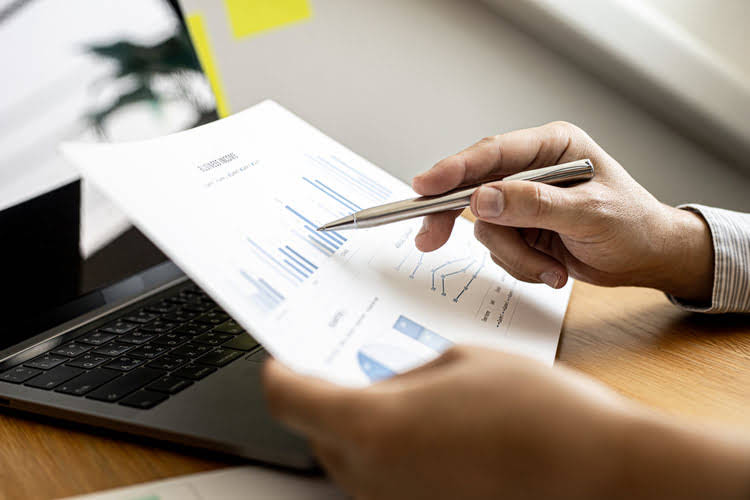
This will help to provide a clear and accurate picture of the financial health of the business. Overall, subsidiary ledgers are an important tool in bookkeeping and accounting, and are essential for managing complex accounts and transactions. By using subsidiary ledgers, companies can more easily track and manage their accounts, and can quickly identify and correct errors or discrepancies. They also provide a more detailed view of a company’s financial position, which can be useful for decision-making and financial analysis. Subsidiary ledgers are commonly used to track accounts such as accounts receivable, accounts payable, inventory, and fixed assets. By keeping detailed information in a subsidiary ledger, it is easier to manage and reconcile these accounts.

Cash Book
Accounts payable ensures you stay on top of due payments without risking the stoppage of services or supplies. Download our data sheet to learn how you can manage complex vendor and customer rebates and commission reporting at scale. Download our data sheet to learn how you can prepare, validate and submit regulatory returns 10x faster with automation. Operating Income is generated from your core business operations and helps you to know your capacity to generate profits from primary business activities. Assets are the resources your business owns, and these resources have the capacity to examples of a general ledger generate cash flows.
- A ledger balance is the balance in an account at the end of a business day, reflecting all the posted transactions.
- It helps business owners make decisions for the future of their companies.
- The sales ledger is another subsidiary ledger that contains information about all sales made by a company.
- Now let’s move on to talk about debits vs. credits and how they work in an accounting system.
- General ledger codes are typically used in accounting for classifying and recording every business transaction.
Common Examples of Ledger Accounts
Capture important insights on the overall financial health of your company with this dynamic general ledger template with budget-comparison capabilities. This template includes a year-to-date (YTD) budget summary sheet for recording the budgeted and actual amounts of transactions. A Monthly Expenses Summary tab enables you to add general ledger codes for each monthly expense. Each transaction, whether revenue, expense, asset, or liability, is posted to the relevant account.

Expenses
![]()
Now this is where we take you a step further into understanding the general ledger. From customizable and specific to printable and reusable, a template can reduce a solid percentage of your tasks. Smartsheet provides a better way to unify collaboration and automate workflows so you can spend more time on the work that matters. The Smartsheet platform makes it easy to plan, capture, manage, and report on work from anywhere, helping your team be more effective and get more done.
- The general ledger is essential for generating precise financial statements.
- This is more like the God of all ledgers because it has been part of accounting for decades now.
- General ledger exampleFor example, if you sell $100 worth of goods, you would record it in your general ledger under revenue.
- A subsidiary ledger is a ledger that contains detailed information about specific accounts.
- Examples of subsidiary ledgers include the accounts receivable and accounts payable ledgers.
Accounts in a general ledger
First, they’re translated into journal entries and posted into a company book called the general income statement journal. Keeping an accurate summary of all your business’s transactions through a general ledger is one of the most crucial and beneficial practices in accounting. So, in other words, the general ledger keeps track of what is going on with every transaction of the business. This is exactly why the document is also considered the principal book of the accounting system and is used as a basis for the creation of accounting reports. If you look at the information that’s recorded in an accounting journal and an accounting ledger, a lot of it would look the same.

Learn More

They are responsible for recording financial transactions, preparing financial statements, and ensuring compliance with accounting standards and regulations. In modern business bookkeeping, software is commonly used to manage ledgers. Accounting software can help businesses keep track of their financial transactions more efficiently.
Think of the general ledger as the heart of your business’s financial system. Every penny that comes in or goes out gets recorded here, keeping your company’s finances healthy and ordered. Consider the following example where a company receives a $1,000 payment from a client for its services.
For this reason the ledger is sometimes known as the book of final entry or the book of secondary entry. Below is a break down of subject weightings in the FMVA® financial analyst program. As you can see there is a heavy focus on financial modeling, finance, Excel, business valuation, budgeting/forecasting, PowerPoint presentations, accounting and business strategy. If you want to learn more methods of preventing and managing mistakes in accounting, then head over to our guide on accounting errors.
Subsidiary Ledgers and Control Accounts
This balanced approach ensures accuracy and creates a complete financial trail. These statements help management, accountants, analysts, investors, and other stakeholders assess your company’s performance. You need to Restaurant Cash Flow Management compare the closing trial balances of previous accounting periods to the opening balances of the current period’s ledger accounts.
